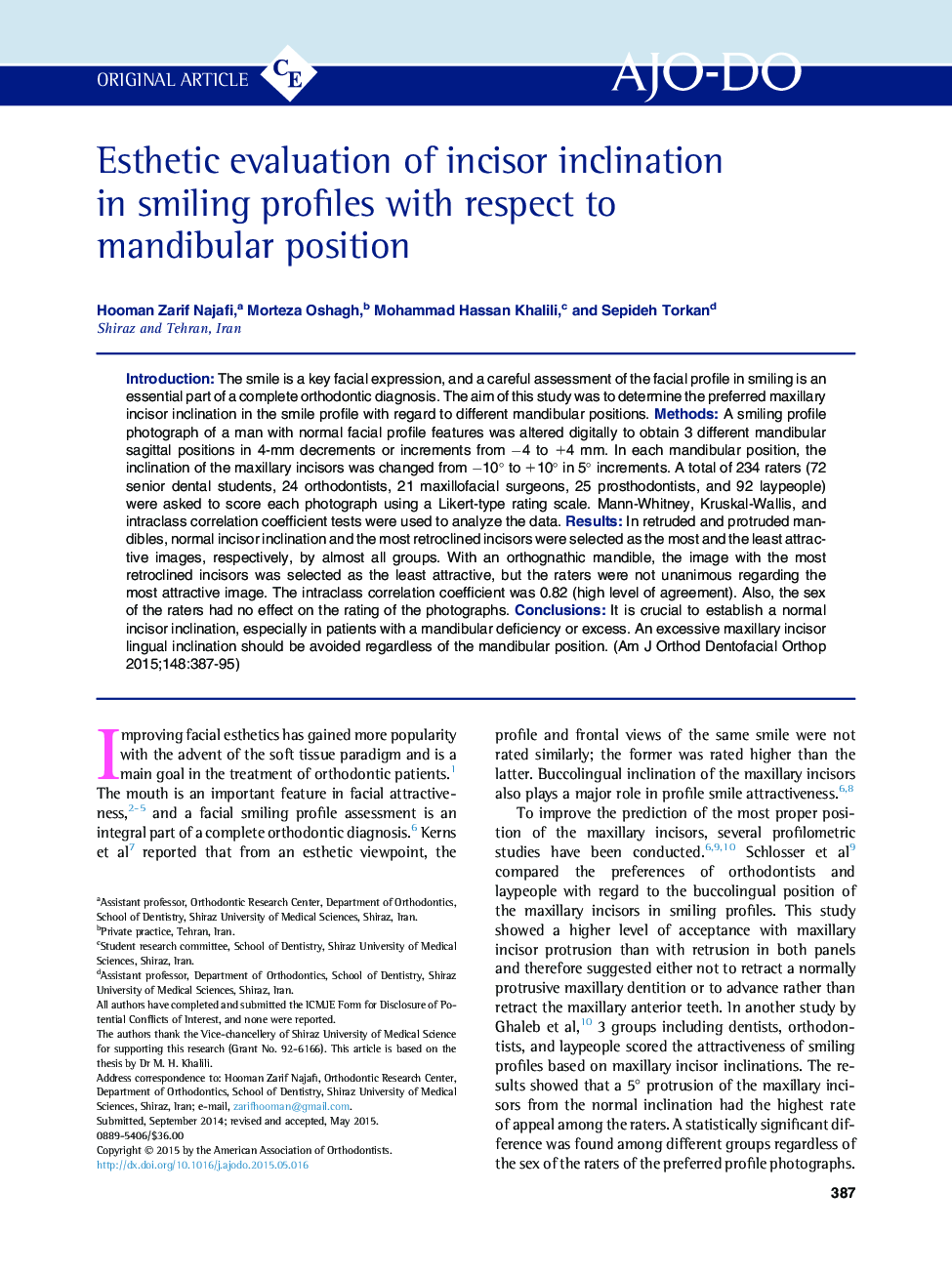| Article ID | Journal | Published Year | Pages | File Type |
|---|---|---|---|---|
| 3115446 | American Journal of Orthodontics and Dentofacial Orthopedics | 2015 | 9 Pages |
•Normal maxillary incisor inclination is favored when the mandible is retruded.•Normal maxillary incisor inclination is favored when the mandible is protruded.•When the mandible is positioned normally, the preferred incisal inclination varies.•Raters generally prefer less incisor inclination.•Raters prefer labial inclination over lingual inclination.
IntroductionThe smile is a key facial expression, and a careful assessment of the facial profile in smiling is an essential part of a complete orthodontic diagnosis. The aim of this study was to determine the preferred maxillary incisor inclination in the smile profile with regard to different mandibular positions.MethodsA smiling profile photograph of a man with normal facial profile features was altered digitally to obtain 3 different mandibular sagittal positions in 4-mm decrements or increments from −4 to +4 mm. In each mandibular position, the inclination of the maxillary incisors was changed from −10° to +10° in 5° increments. A total of 234 raters (72 senior dental students, 24 orthodontists, 21 maxillofacial surgeons, 25 prosthodontists, and 92 laypeople) were asked to score each photograph using a Likert-type rating scale. Mann-Whitney, Kruskal-Wallis, and intraclass correlation coefficient tests were used to analyze the data.ResultsIn retruded and protruded mandibles, normal incisor inclination and the most retroclined incisors were selected as the most and the least attractive images, respectively, by almost all groups. With an orthognathic mandible, the image with the most retroclined incisors was selected as the least attractive, but the raters were not unanimous regarding the most attractive image. The intraclass correlation coefficient was 0.82 (high level of agreement). Also, the sex of the raters had no effect on the rating of the photographs.ConclusionsIt is crucial to establish a normal incisor inclination, especially in patients with a mandibular deficiency or excess. An excessive maxillary incisor lingual inclination should be avoided regardless of the mandibular position.
